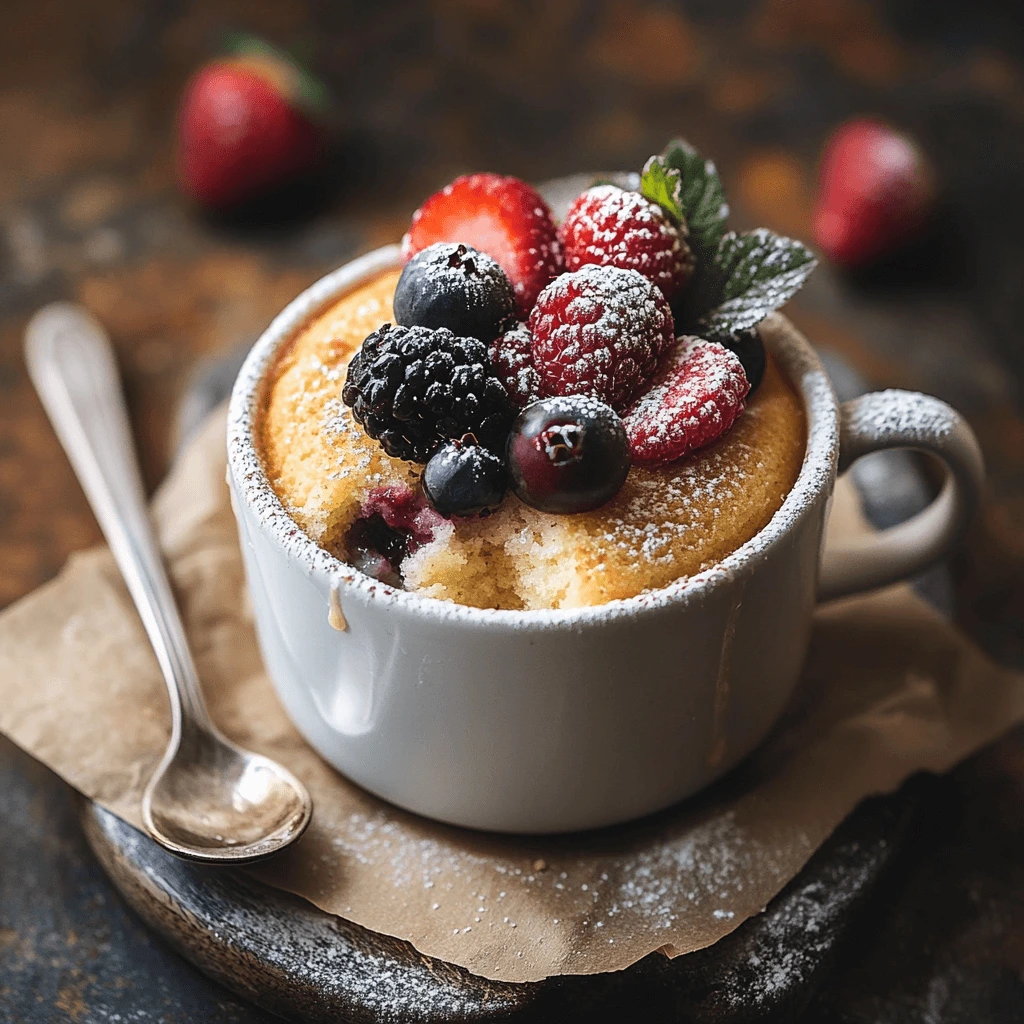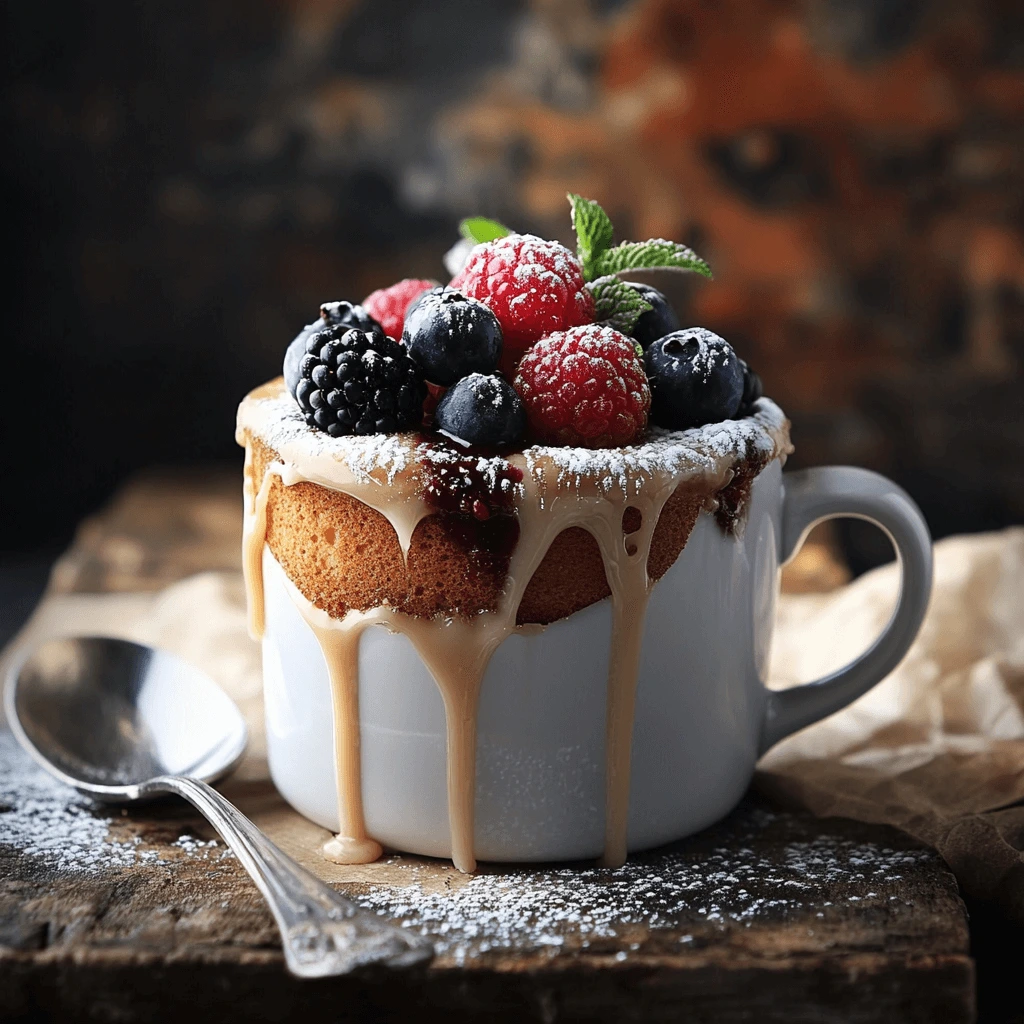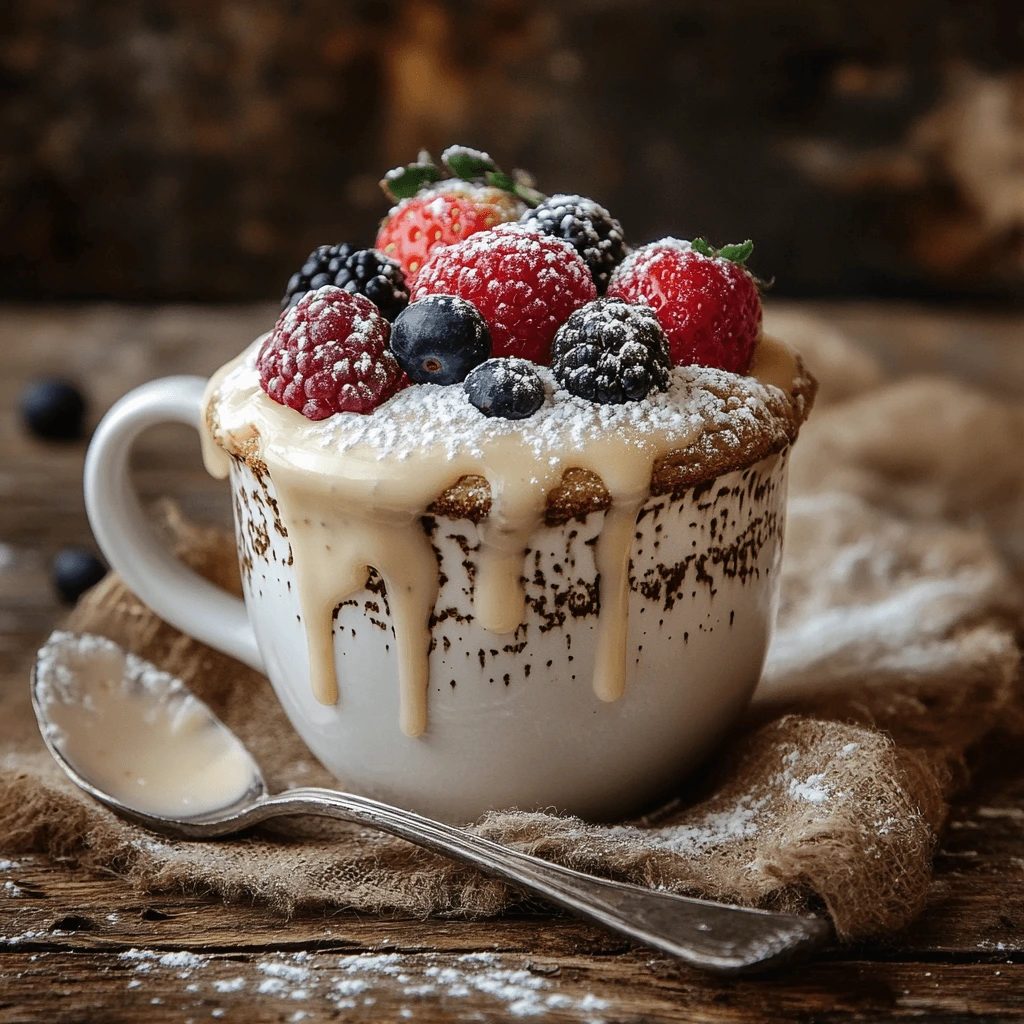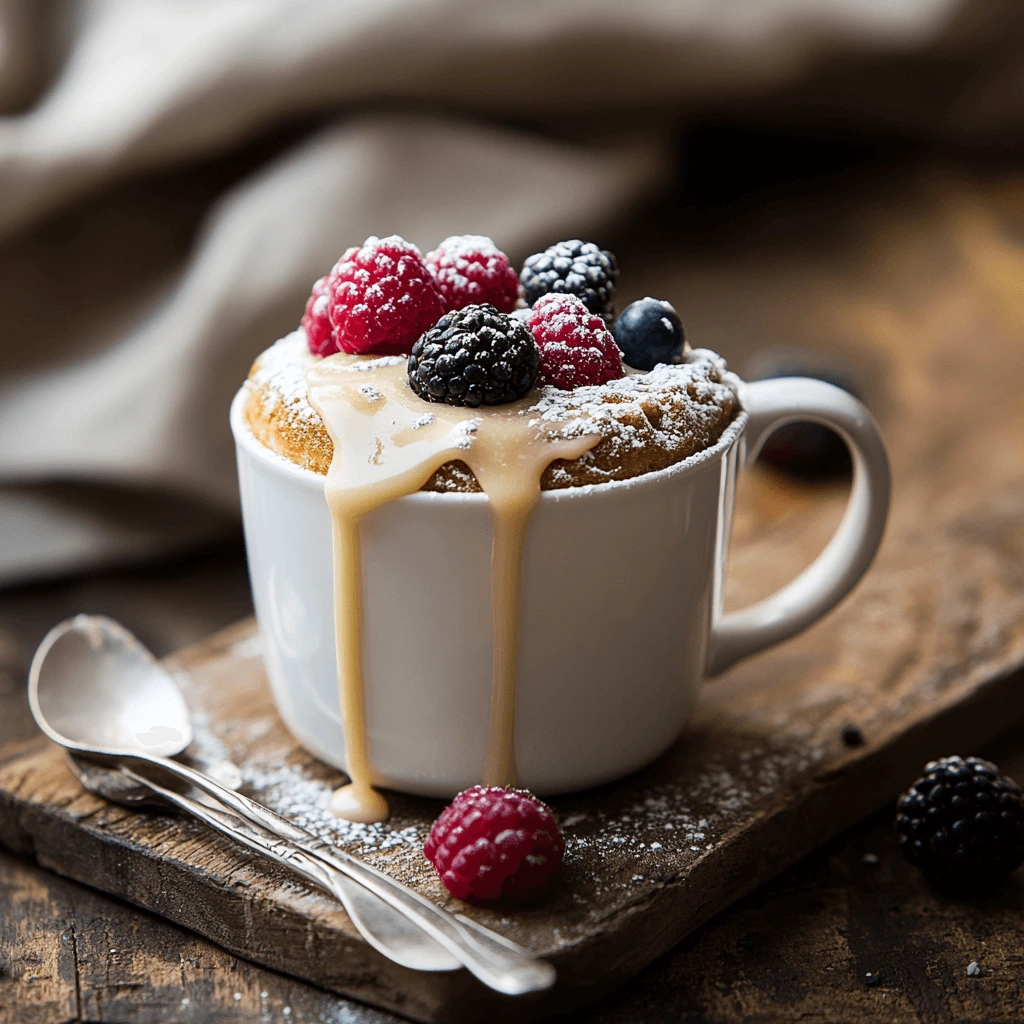Have you ever pulled a mug cake out of the microwave only to discover it has turned into a dense, rubbery disaster? You’re not alone! The phenomenon of a rubbery mug cake is a common culinary conundrum. Whether you are a seasoned baker or a novice experimenting in your kitchen, understanding why this texture occurs can save you from the heartbreak of a failed dessert. This article will guide you through the science behind mug cakes, common mistakes that lead to rubberiness, and effective remedies to ensure your next mug cake is fluffy, moist, and utterly delightful.
Understanding Mug Cake Science: Why Rubberiness Happens
Before we dive into troubleshooting your mug cake woes, let’s discuss the scientific factors that contribute to the texture of mug cakes.
The Role of Gluten in Mug Cake Texture
Gluten is a protein that forms when flour is mixed with water. It provides structure and elasticity to baked goods. In the context of mug cakes, too much gluten development can result in a tough and rubbery texture. When you mix the batter vigorously or for too long, gluten becomes overly activated.
Mug cakes are typically quick to make, requiring minimal mixing. However, if you’re not careful, the natural tendency to mix thoroughly can lead to an undesirable outcome. To avoid this, consider using cake flour instead of all-purpose flour. Cake flour has a lower protein content, which results in less gluten formation and a softer finished product.
Starch and Sugar: The Sweet and Sticky Truth
Another crucial element in the texture of a mug cake is the balance between starch and sugar. Starch absorbs moisture during cooking, while sugar helps create tenderness. If your recipe is overloaded with flour or lacks sufficient sugar, you may end up with a mug cake that has an unappealing rubbery consistency.
The ratios of ingredients play a significant role in achieving the right texture. Too much starch interferes with the delicate crumb structure, making your mug cake dense rather than light and fluffy. Additionally, incorporating sugar can help prevent excess starch absorption, leading to a more desirable mouthfeel.
The Power of Leavening Agents: Baking Powder and Soda
Leavening agents like baking powder and baking soda are essential for giving your mug cake that beloved rise. These ingredients release carbon dioxide gases during the cooking process, which creates air pockets and lifts the cake to fluffy perfection.
However, the amount used matters greatly. Too little leavening means your mug cake won’t rise adequately, resulting in a denser texture. On the other hand, using too much can cause your cake to rise rapidly but then collapse—leaving you with a rubbery center. Finding harmony with your leavening agents is vital for ensuring a successful mug cake.

Culprits Behind the Rubber: Identifying Common Mistakes
Now that we’ve covered the science behind the mug cake’s texture, let’s explore some common mistakes that can lead to a rubbery mess.
Overmixing: The Gluten Activation Trap
One of the most frequent errors made while preparing a mug cake is overmixing the batter. As mentioned earlier, mixing activates gluten, and the more you mix, the tougher the cake becomes.
After combining your dry ingredients with wet ones, stir just until you see no dry flour remaining. There should still be lumps in the batter; this indicates that gluten hasn’t fully developed. Remember, a little lumpiness is perfectly okay—your goal is to keep the cake tender and soft!
Too Much Flour: Achieving the Perfect Ratio
Using too much flour is another surefire way to achieve a rubbery mug cake. Measuring flour inaccurately can lead to disaster, as even a slight excess can throw off your entire recipe.
To ensure you’re using the correct amount of flour, spoon it into your measuring cup instead of scooping directly from the bag. Scooping can compact the flour and result in more than intended. If you’re unsure, it’s wise to start with slightly less flour than your recipe calls for and adjust based on the consistency of the batter.
Overcooking: A Moist Mug Cake’s Worst Enemy
Microwave times can vary significantly, and one of the biggest culprits for a rubbery mug cake is overcooking. When you cook it for too long, the moisture evaporates, leaving you with a chewy, rubber-like texture.
Start by microwaving your mug cake for a short period—around 1 minute—and check its doneness. If it’s not set, continue in small increments (15-20 seconds) until you reach the desired consistency. Remember that the cake will continue to cook even after removing it from the microwave, so it’s better to err on the side of caution.
Incorrect Microwave Power: Finding the Sweet Spot
Understanding how your microwave works is crucial for perfecting your mug cake. Not all microwaves are created equal; some may have higher wattage than others. If the power setting is too high, the exterior may cook too quickly while leaving the inside rubbery and underdone.
Experiment with different power levels to see what works best for your specific microwave. For many recipes, starting at a medium power level can provide more even cooking, allowing the mug cake to rise beautifully without collapsing.
Ingredient Imbalances: Wet vs. Dry
Finally, balancing the wet and dry ingredients is essential for a successful mug cake. An imbalance can lead to a dense, rubbery texture. If your wet ingredients are insufficient, the batter will not bind properly, creating a chewy cake. Conversely, too much liquid can result in a soggy mess.
Always follow the recommended ingredient ratios carefully, but feel free to experiment within reason. If you choose to add extras like chocolate chips or nuts, account for their moisture content when adjusting your wet and dry ingredients.

Rescue Remedies: Fixing Your Mug Cake Recipe
If you find yourself facing the dreaded dilemma of a rubbery mug cake, fear not! There are plenty of ways to rescue your recipe and transform it into a delicious success.
Adjusting the Flour Content: Start Small, Test Often
If your mug cake consistently turns out rubbery, consider adjusting the flour content. Begin by reducing the amount of flour in your recipe by a tablespoon or two. This small change can make a significant difference in texture.
Keep track of your adjustments so you can replicate your successes. Each time you tweak the recipe, take note of the outcomes. This methodical approach will help you fine-tune your mug cake to perfection!
Egg Alternatives: Exploring Different Binding Agents
If you are looking to switch things up or can’t use eggs for dietary reasons, there are plenty of alternatives to consider. Ingredients like applesauce, mashed bananas, or yogurt can serve as excellent substitutes in your mug cake.
These alternatives not only help bind the ingredients together but also provide additional moisture—one of the key components in avoiding a rubbery texture. Just remember, if you decide to substitute, you may need to tweak other ingredient ratios to maintain the balance.
Incorporating Fat: Adding Moisture and Richness (Oils & Butters)
Fat plays a crucial role in baking, imparting moisture and richness to your mug cake. If your previous attempts resulted in a rubbery texture, consider incorporating oils or melted butter into the batter.
Adding a tablespoon or two of vegetable oil, coconut oil, or melted butter can work wonders. This addition enhances the overall flavor and contributes to a softer, more tender crumb. Be sure to mix gently to avoid activating too much gluten.
Mixing Techniques: Gentle Folds for a Tender Cake
When it comes to mixing your mug cake batter, lightness is key. Opt for gentle folding techniques rather than vigorous stirring.
Using a spatula or wooden spoon, fold in the dry ingredients with your wet ingredients until just combined. This technique minimizes gluten activation and encourages a more tender texture, ensuring your mug cake won’t turn rubbery.
Optimizing Microwave Settings & Cooking Times: Experimentation is Key
Finding the ideal cooking time and power level for your microwave may require some trial and error. Keep a close eye on your mug cake as it cooks, and trust your instincts.
If you’re unsure, try cooking at a lower power setting for a longer duration. This method allows for more even cooking, helping the mug cake to rise without causing the outer edges to harden too quickly.
Recipe Variations for Superior Texture: Beyond the Basic
Once you’ve mastered the science behind mug cakes, it’s time to explore variations that can enhance both flavor and texture.

Adding Yogurt or Sour Cream: Enhancing Moisture and Tang
Incorporating yogurt or sour cream into your mug cake recipe is a fantastic way to boost moisture while adding a subtle tang. Both ingredients act as tenderizers, ensuring a soft crumb.
Start with a tablespoon or two, and adjust based on your preferences. This addition can lead to a moist and flavorful mug cake that deviates from the typical spongey texture.
Chocolate Mug Cake: Mastering the Melt for Perfect Fudge
Chocolate lovers rejoice! Chocolate mug cakes can be particularly prone to rubberiness due to the richness of cocoa. To achieve that decadent fudge-like texture, focus on the fat and sugar balance.
Use high-quality cocoa powder and consider melting chocolate into the batter for an extra layer of flavor. Remember to monitor the cooking time closely, as chocolate mug cakes can intensify in texture if left in the microwave too long.
Coffee Mug Cake: Brew-tiful Texture Tips
For coffee enthusiasts, infusing coffee into your mug cake can elevate the flavor profile. Combine brewed coffee or espresso with your wet ingredients for a delightful kick.
To maintain a tender texture, reduce the amount of flour slightly to accommodate the added liquid. The result is a rich, aromatic cake that’s sure to please any coffee lover.
Gluten-Free Adaptations: Flour Substitutes and Techniques
If you’re following a gluten-free diet, crafting a mug cake without gluten can present unique challenges. Using alternative flours like almond flour, coconut flour, or gluten-free all-purpose flour can yield delicious results—but requires cautious adjustments.
Be mindful of the moisture content when substituting flours. Gluten-free flours often absorb more liquid, so you may need to increase the wet ingredients to avoid a rubbery texture.
Vegan Options: Egg Replacers and Alternative Milks
Vegan mug cakes offer an exciting opportunity to explore creative ingredient swaps. Use egg replacers like flaxseed meal, chia seeds, or silken tofu to bind your ingredients effectively.
Additionally, swapping dairy milk for non-dairy varieties such as almond milk, oat milk, or soy milk can provide great flavor without compromising texture. Pay careful attention to ratios, as you’ll want to find a balance that keeps your mug cake tender and moist.
Troubleshooting Specific Scenarios: Answering Your Questions
Sometimes, despite your best efforts, specific scenarios arise that leave you scratching your head. Let’s address these common issues to provide clarity.
“My Mug Cake is Rubbery in the Center, but Dry on Top.”
This frustrating scenario often occurs due to uneven cooking. If you notice a rubbery center paired with a dry exterior, it suggests that the outside of the mug cake cooked faster than the inside.
To remedy this, try reducing the microwave power and increasing the cooking time incrementally. This adjustment allows for uniform heat distribution, leading to an evenly cooked mug cake.
“The Mug Cake Rises Too Much, Then Collapses and is Rubbery.”
A mug cake rising excessively before collapsing typically indicates an overabundance of leavening agents. If the cake rises too quickly, it can deflate and develop a rubbery texture afterward.
Adjust the amount of baking powder or baking soda in your recipe. Try halving the quantity and observe the changes. Another tip is to mix the batter gently to prevent excessive air incorporation.
“My Gluten-Free Mug Cake is Always Rubbery—What Am I Doing Wrong?”
Rubbery gluten-free mug cakes are often a result of improper flour substitutions or ingredient imbalances. Ensure you’re using the right gluten-free flour blend and balance it with adequate moisture.
Consider adding ingredients like yogurt or applesauce for extra moisture, and don’t forget to incorporate enough fat. A combination of different gluten-free flours can also improve texture.
“Can I Use Self-Rising Flour in a Mug Cake? Will it Help with Texture?”
Self-rising flour can be used in place of all-purpose flour in mug cake recipes, as it contains baking powder and salt. By using self-rising flour, you can simplify your ingredient list while potentially enhancing texture.
However, be cautious about omitting other leavening agents entirely, as this could lead to an overly dense cake. Keep a close watch on your measurements to achieve the best results.
Conclusion
Achieving a perfectly textured mug cake requires understanding the science behind baking, recognizing common mistakes, and experimenting with various techniques. While encountering a rubbery mug cake can be disappointing, knowing how to troubleshoot and remedy the situation can turn your baking experience from frustrating to fabulous.
Armed with knowledge about ingredients, cooking methods, and recipe variations, you’re well on your way to crafting delightful mug cakes that are moist, tender, and bursting with flavor. Now, roll up your sleeves, grab that mug, and let the sweet magic of baking unfold!
For more recipes please click on below links:
Moist Muffins – Mastering the Art of Baking These Delightful Treats
Oil vs. Butter in Pound Cake – Uncovering to the Perfect Dessert

